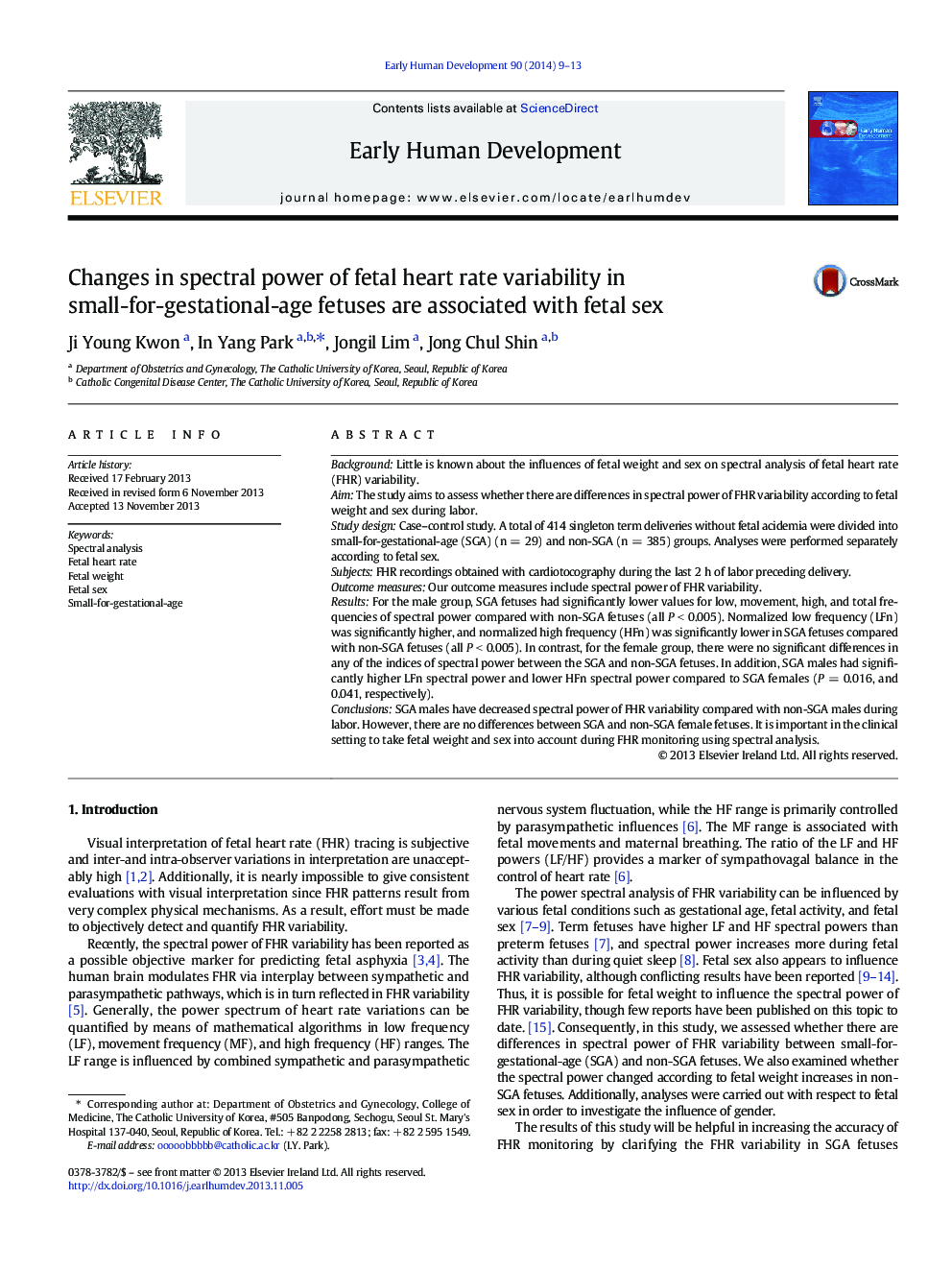| Article ID | Journal | Published Year | Pages | File Type |
|---|---|---|---|---|
| 3918073 | Early Human Development | 2014 | 5 Pages |
BackgroundLittle is known about the influences of fetal weight and sex on spectral analysis of fetal heart rate (FHR) variability.AimThe study aims to assess whether there are differences in spectral power of FHR variability according to fetal weight and sex during labor.Study designCase–control study. A total of 414 singleton term deliveries without fetal acidemia were divided into small-for-gestational-age (SGA) (n = 29) and non-SGA (n = 385) groups. Analyses were performed separately according to fetal sex.SubjectsFHR recordings obtained with cardiotocography during the last 2 h of labor preceding delivery.Outcome measuresOur outcome measures include spectral power of FHR variability.ResultsFor the male group, SGA fetuses had significantly lower values for low, movement, high, and total frequencies of spectral power compared with non-SGA fetuses (all P < 0.005). Normalized low frequency (LFn) was significantly higher, and normalized high frequency (HFn) was significantly lower in SGA fetuses compared with non-SGA fetuses (all P < 0.005). In contrast, for the female group, there were no significant differences in any of the indices of spectral power between the SGA and non-SGA fetuses. In addition, SGA males had significantly higher LFn spectral power and lower HFn spectral power compared to SGA females (P = 0.016, and 0.041, respectively).ConclusionsSGA males have decreased spectral power of FHR variability compared with non-SGA males during labor. However, there are no differences between SGA and non-SGA female fetuses. It is important in the clinical setting to take fetal weight and sex into account during FHR monitoring using spectral analysis.
